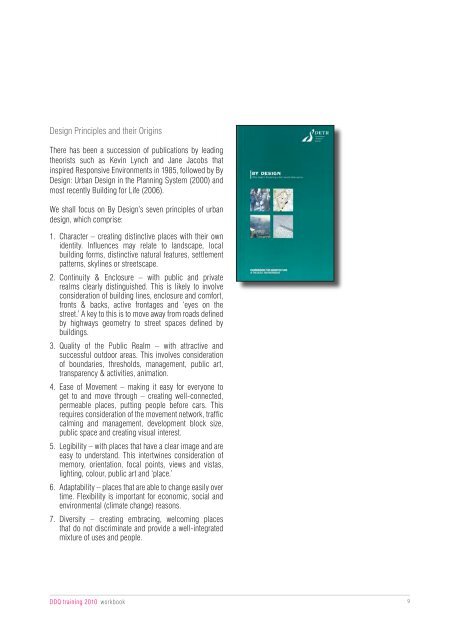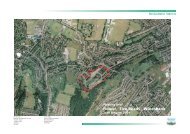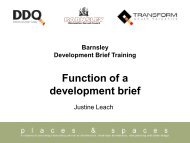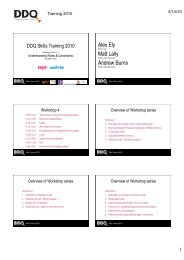Handbook: Workshop 1 (PDF) - DDQ - Delivering Design Quality
Handbook: Workshop 1 (PDF) - DDQ - Delivering Design Quality
Handbook: Workshop 1 (PDF) - DDQ - Delivering Design Quality
Create successful ePaper yourself
Turn your PDF publications into a flip-book with our unique Google optimized e-Paper software.
<strong>Design</strong> Principles and their OriginsThere has been a succession of publications by leadingtheorists such as Kevin Lynch and Jane Jacobs thatinspired Responsive Environments in 1985, followed by By<strong>Design</strong>: Urban <strong>Design</strong> in the Planning System (2000) andmost recently Building for Life (2006).We shall focus on By <strong>Design</strong>’s seven principles of urbandesign, which comprise:1...4.5.6.7.Character – creating distinctive places with their ownidentity. Influences may relate to landscape, localbuilding forms, distinctive natural features, settlementpatterns, skylines or streetscape.Continuity & Enclosure – with public and privaterealms clearly distinguished. This is likely to involveconsideration of building lines, enclosure and comfort,fronts & backs, active frontages and ‘eyes on thestreet.’ A key to this is to move away from roads definedby highways geometry to street spaces defined bybuildings.<strong>Quality</strong> of the Public Realm – with attractive andsuccessful outdoor areas. This involves considerationof boundaries, thresholds, management, public art,transparency & activities, animation.Ease of Movement – making it easy for everyone toget to and move through – creating well-connected,permeable places, putting people before cars. Thisrequires consideration of the movement network, trafficcalming and management, development block size,public space and creating visual interest.Legibility – with places that have a clear image and areeasy to understand. This intertwines consideration ofmemory, orientation, focal points, views and vistas,lighting, colour, public art and ‘place.’Adaptability – places that are able to change easily overtime. Flexibility is important for economic, social andenvironmental (climate change) reasons.Diversity – creating embracing, welcoming placesthat do not discriminate and provide a well-integratedmixture of uses and people.Skills Training 2010<strong>DDQ</strong> training 2010 workbook






